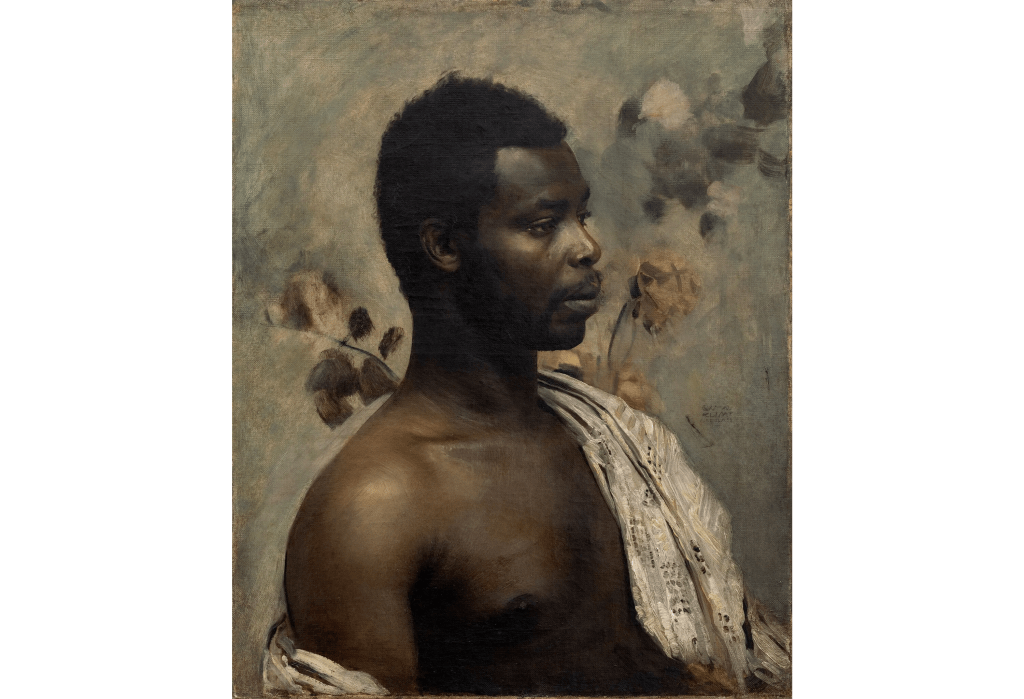The rediscovery of a Gustav Klimt painting of a West African prince generated headlines far and wide when it appeared at the TEFAF Maastricht art fair this past March, with lengthy stories appearing in mainstream outlets such as the Associated Press and the New York Times. But this week, debate raged in two European publications over whether the painting had illegally come into the possession of a Vienna gallery.
On Saturday, the Hungarian publication HVG reported that the work had been “smuggled” into Austria prior to its exhibition at TEFAF. Then, a few days later, Der Standard read a follow-up article in which the Austrian publication reported that the Viennese dealers who showed the painting had, in fact, received the necessary export permit.
Related Articles

In an email to ARTnews, a representative for Vienna’s Wienerroither and Kohlbacher gallery, which brought the Klimt painting to TEFAF, wrote, “The whole thing was purely an insinuation by HVG.”
The Klimt painting was made in 1897, the same year that the artist formed the Vienna Secession movement, and depicts Prince William Nii Nortey Dowuona, who acted as a representative to the Ga people in what is now known as Ghana. At TEFAF, Wienerroither and Kohlbacher gallery priced it at 15 million euros, or about $16.4 million.
According to Wienerroither and Kohlbacher, an Austrian couple approached the gallery in 2023 with the painting, not realizing it was a Klimt. At the time, the work was dirtied and shoddily framed, the gallery said. It noticed that there was a stamp from the Klimt estate, then confirmed that the work was a true painting by the artist with Alfred Weidinger, a scholar who penned a Klimt catalogue raisonné, per the Times report.
After producing more naturalistic portraits such as this one, Klimt later moved on to the more expressionistic paintings for which he is today well-known. Weidinger told the Times that the painting “marks the transition to a new stage in his artistic development.” Lui Wienerroither, the gallery’s cofounder, said in that report that the painting was at the time “the only Klimt painting on the market.”
It wasn’t clear whether anyone had bought the painting during TEFAF. Wienerroither said that he was in “active negotiations with a major museum” for the purchase of the work, but no institution has since officially announced that it has acquired the work.
The painting had appeared at TEFAF as a result of a restitution settlement with the heirs of Ernestine Klein, a Jewish collector who fled Austria in 1938 amid the rise of the Nazi regime.
Both the HVG and Der Standard reports note that the painting had come to Hungary after 1938. According to Der Standard, the painting was held “in private Hungarian ownership since the 1950s and until at least 2021.” But it is not yet known how the work came to Hungary.
The HVG report appeared to stem from Facebook posts published by Péter Molnos, who wrote a book called Lost Heritage that focuses on Hungarian collectors in the 20th century. On Facebook, Molnos questioned the “seriously movie-like” media reports about the Klimt painting, asking: “Have we lost a Klimt?!”
He said that conservator Zsófia Végvári had examined the work in her Budapest lab sometime before the work became publicly known, something Végvári also described in a blog post earlier this year.
Der Standard said that Hungarian officials had, in fact, signed off on the release of the painting, allowing it to travel to Austria in 2023. “After the Hungarian authorities confirmed that the painting was safe to export, the current owner, who lives in Austria, brought the painting to Vienna,” a gallery representative told ARTnews.
The painting may have only left Hungary because officials there did entirely not realize what was being shipped. Der Standard reported that Hungarian bureaucrats appeared not to know that the work was an authenticated Klimt: the Klimt estate’s stamp “may have been overlooked by the cultural heritage conservationists,” the publication said.
“If this is true,” wrote Molnos on Facebook this week, “then we have failed a Klimt painting, which is a world sensation!”

